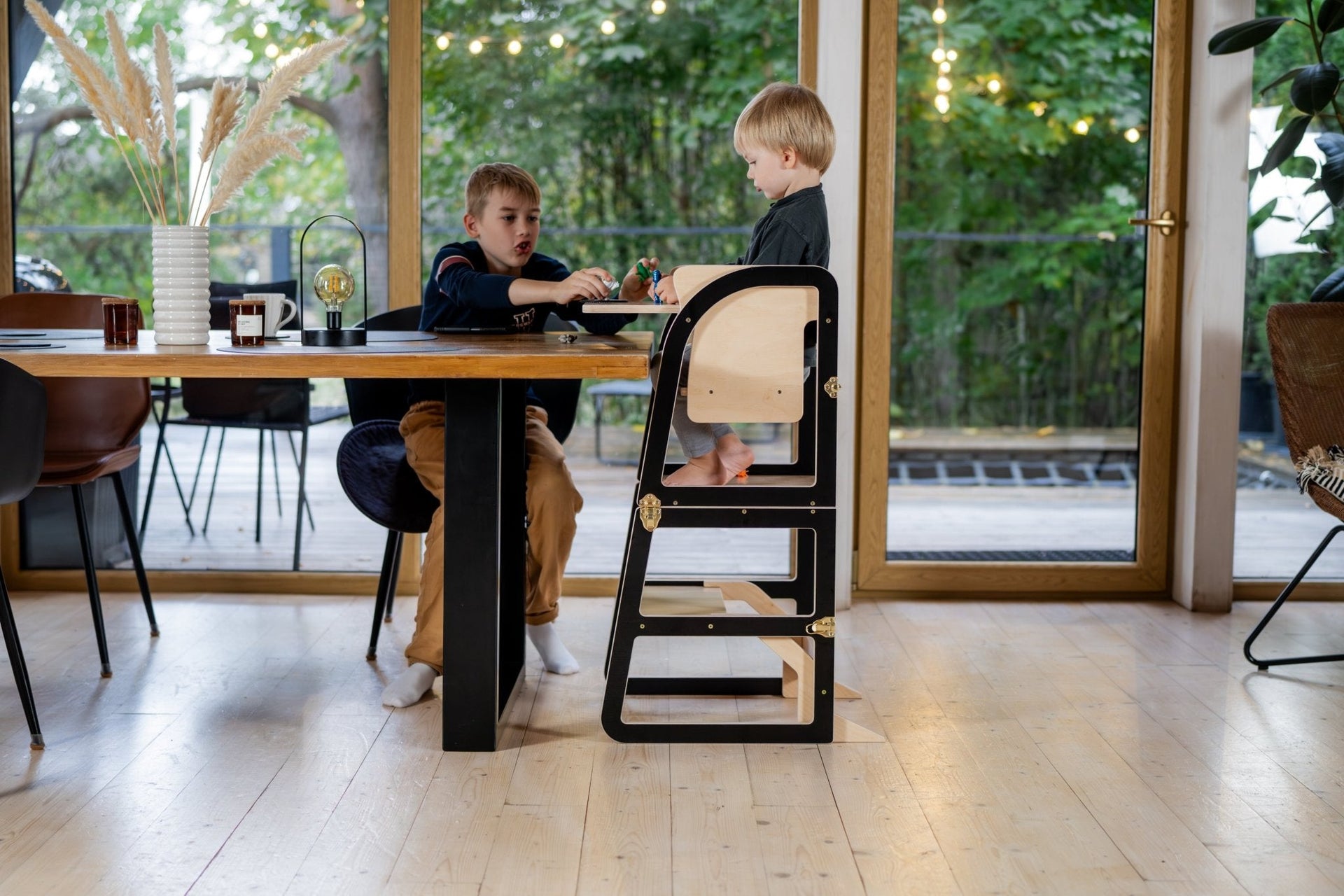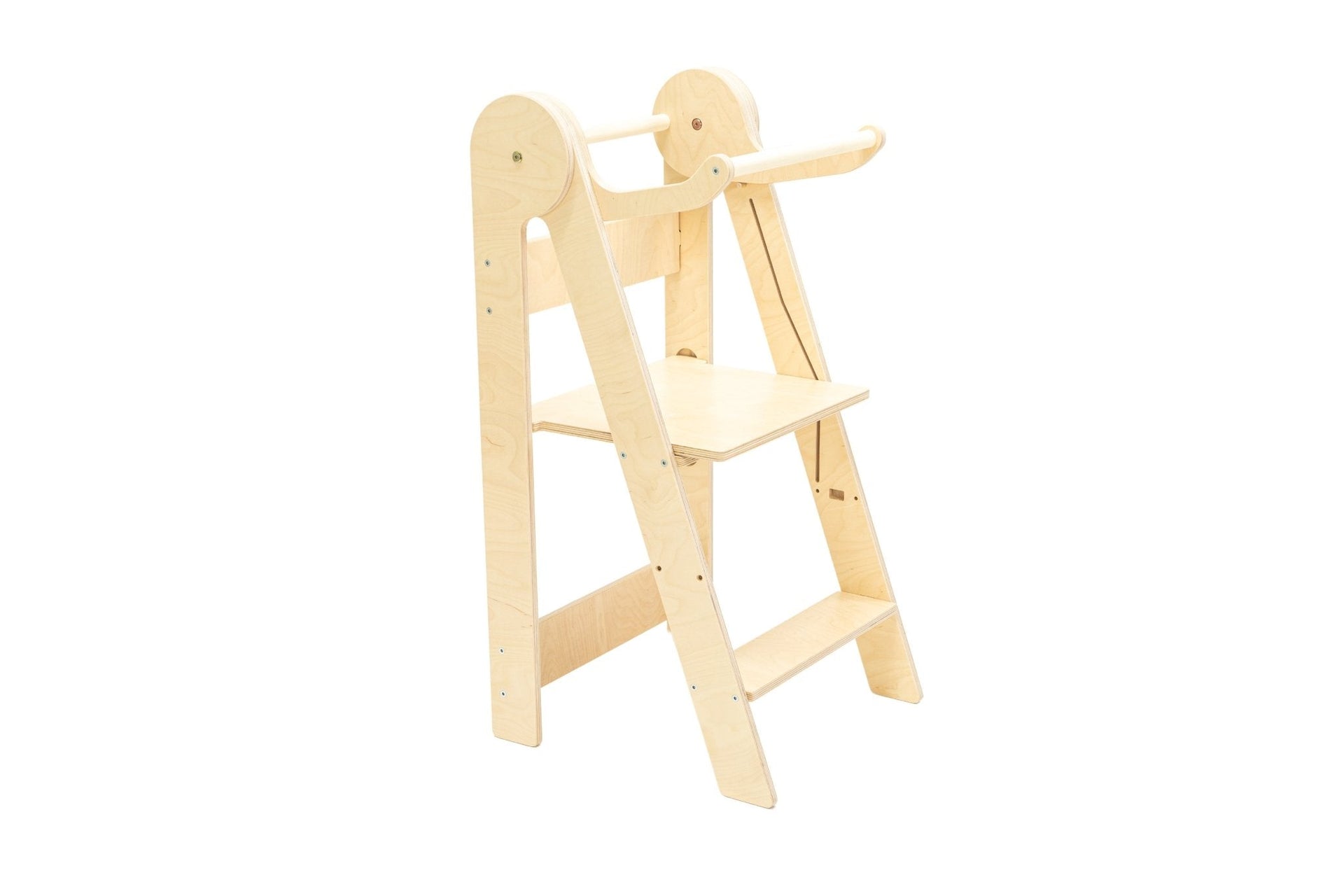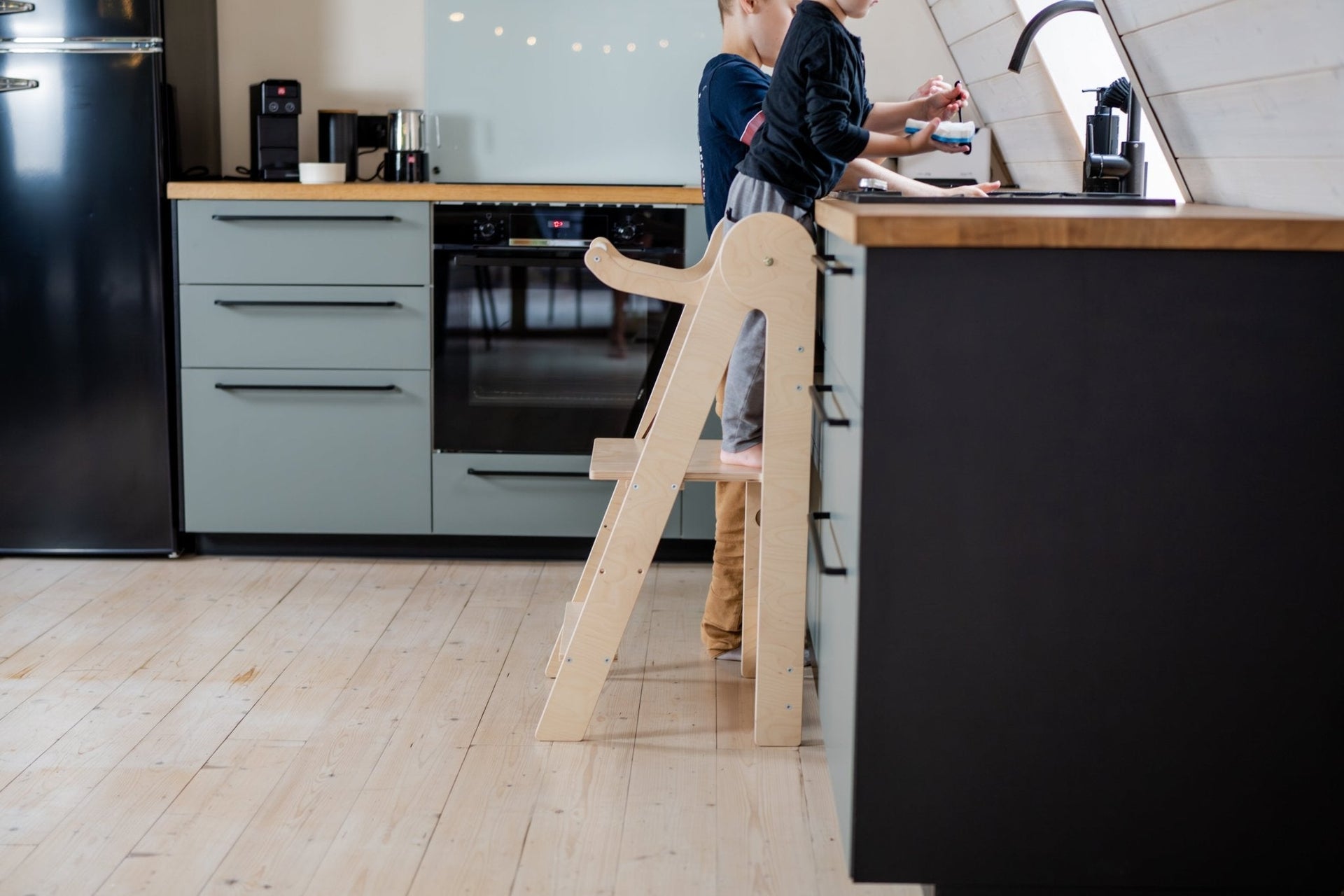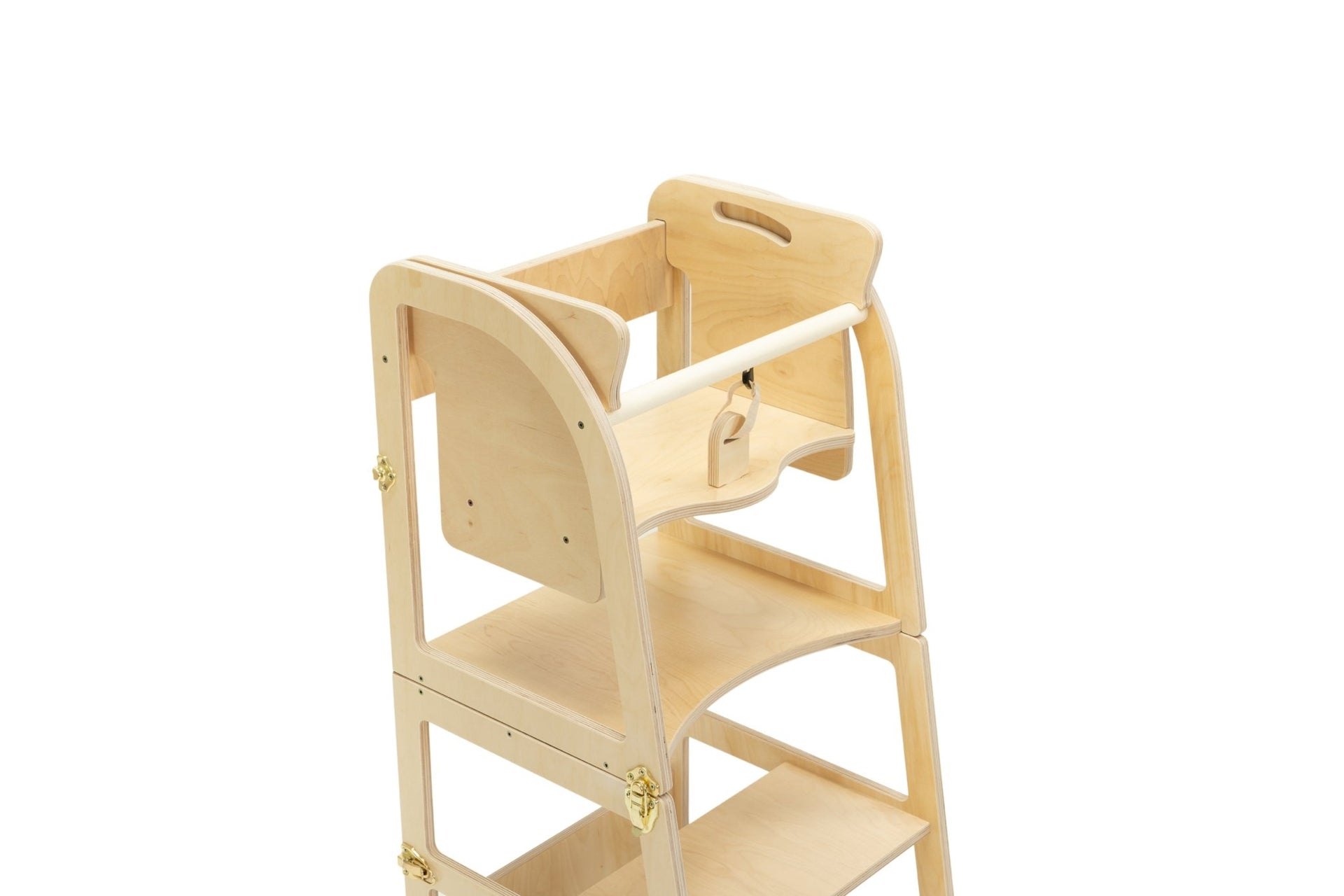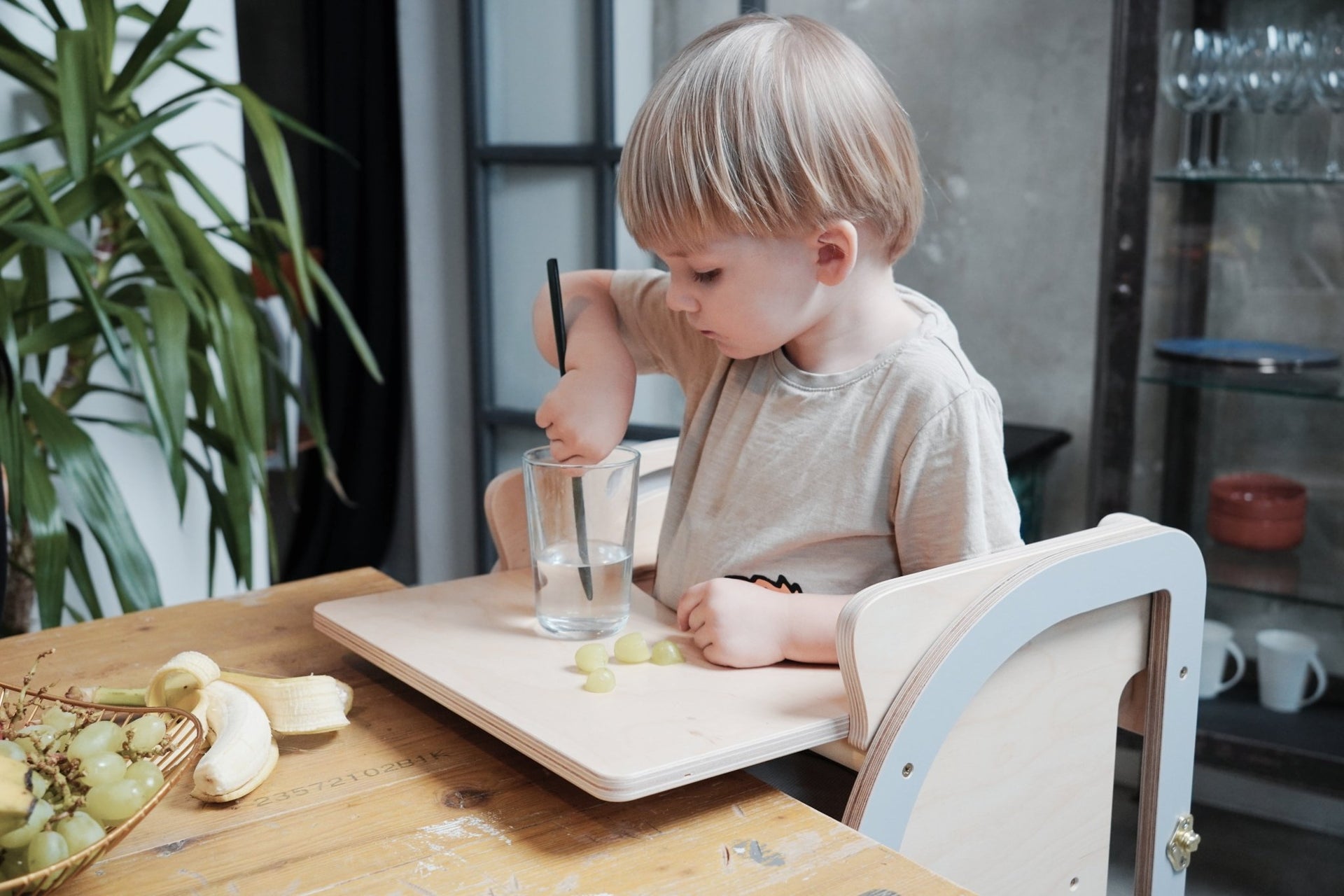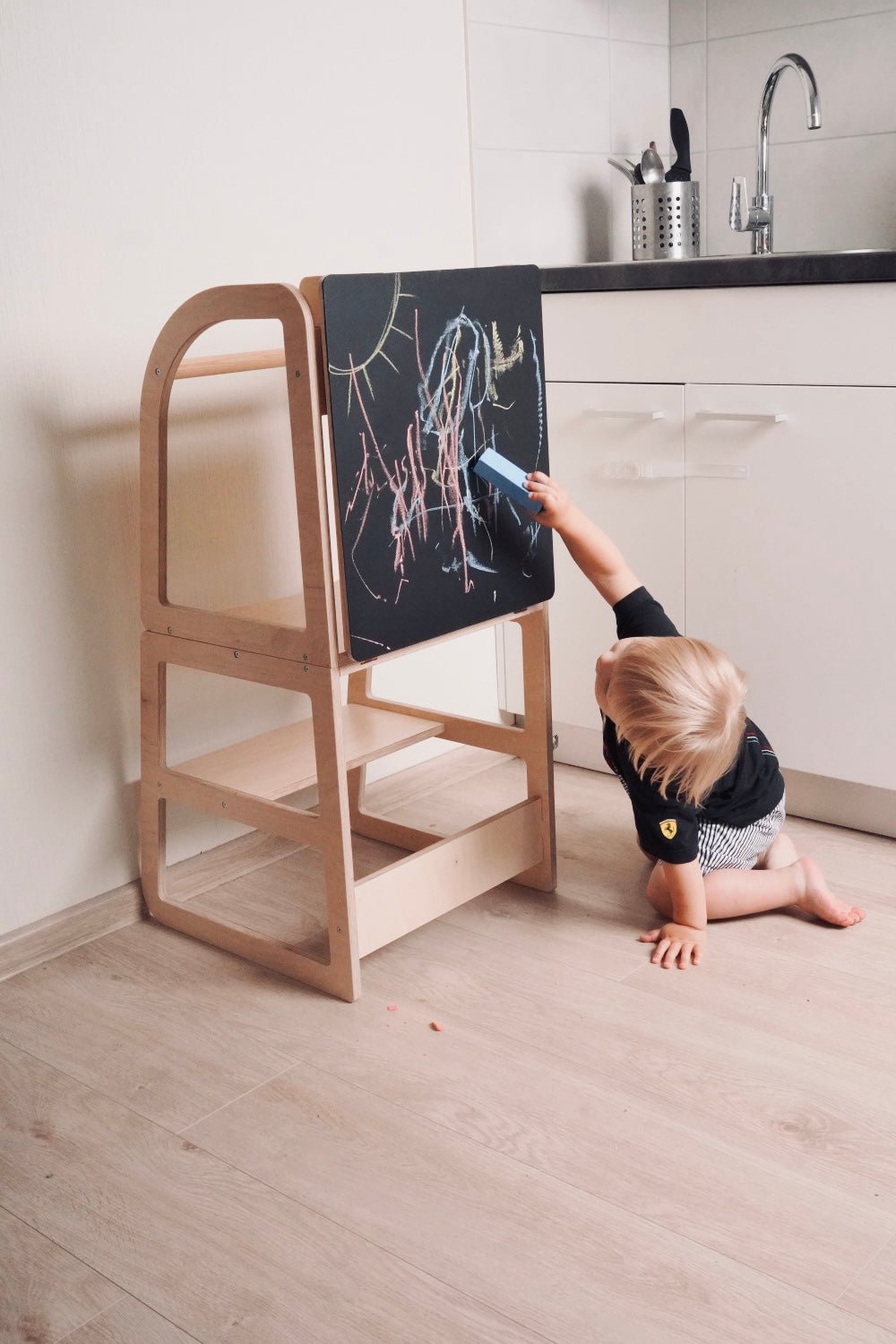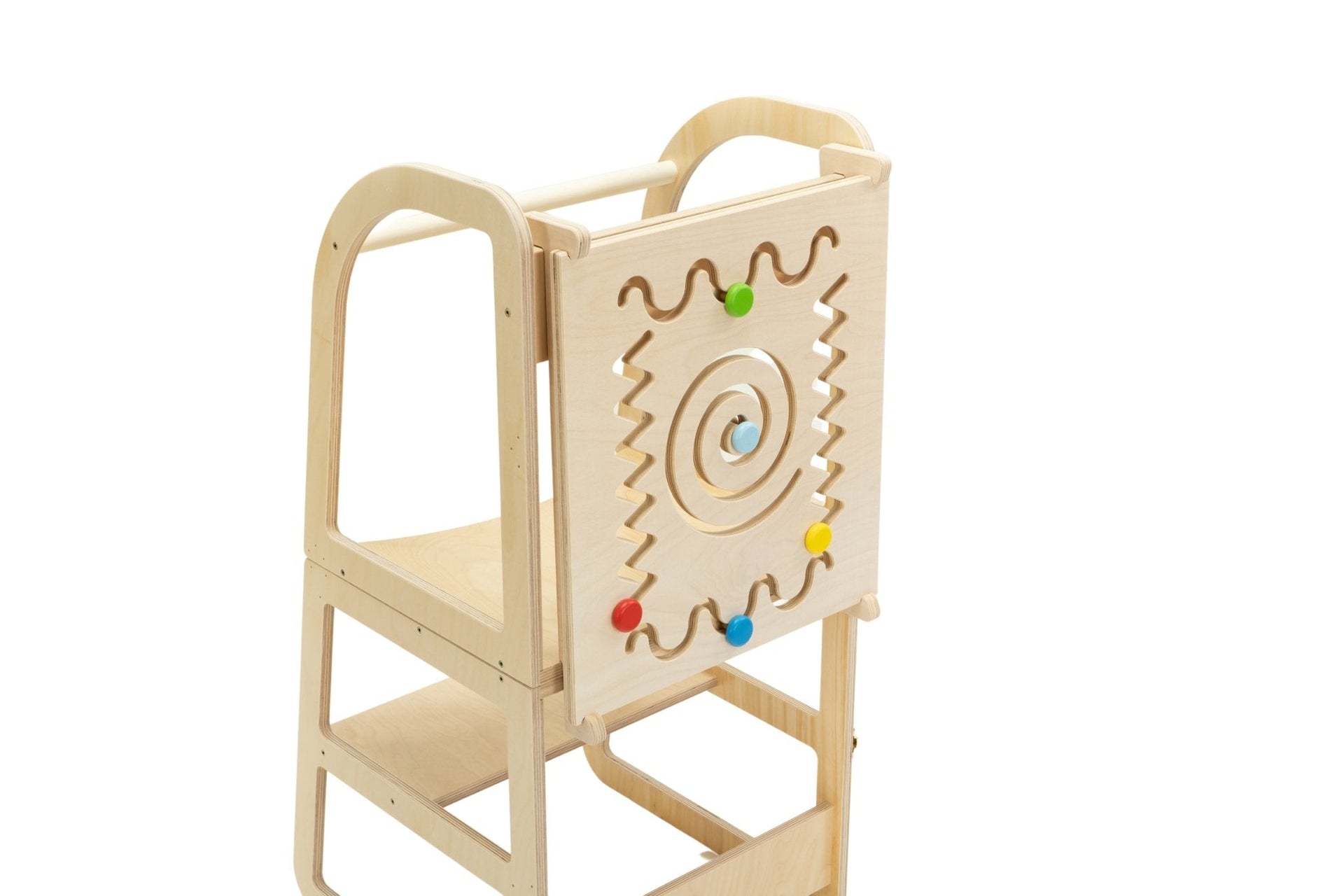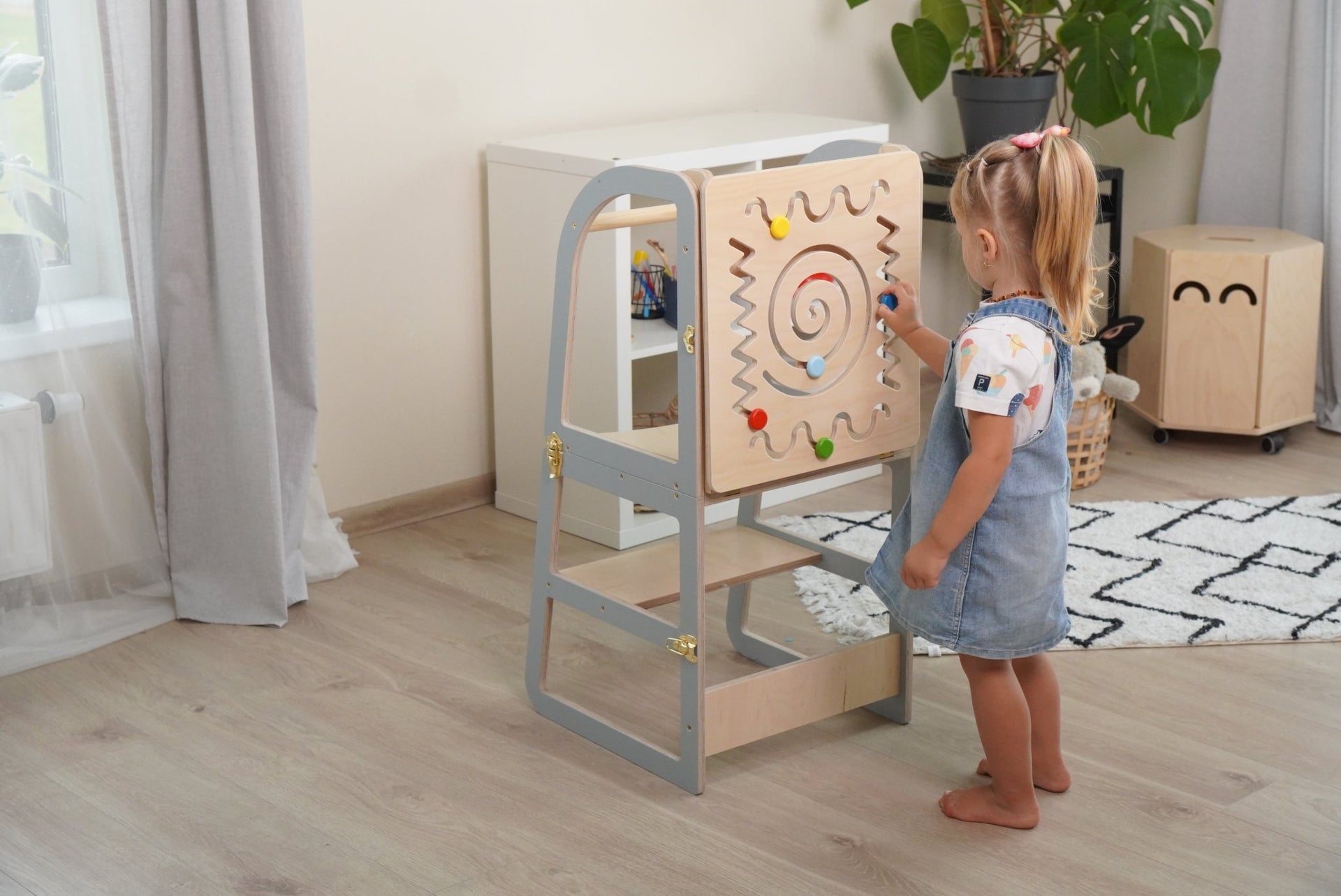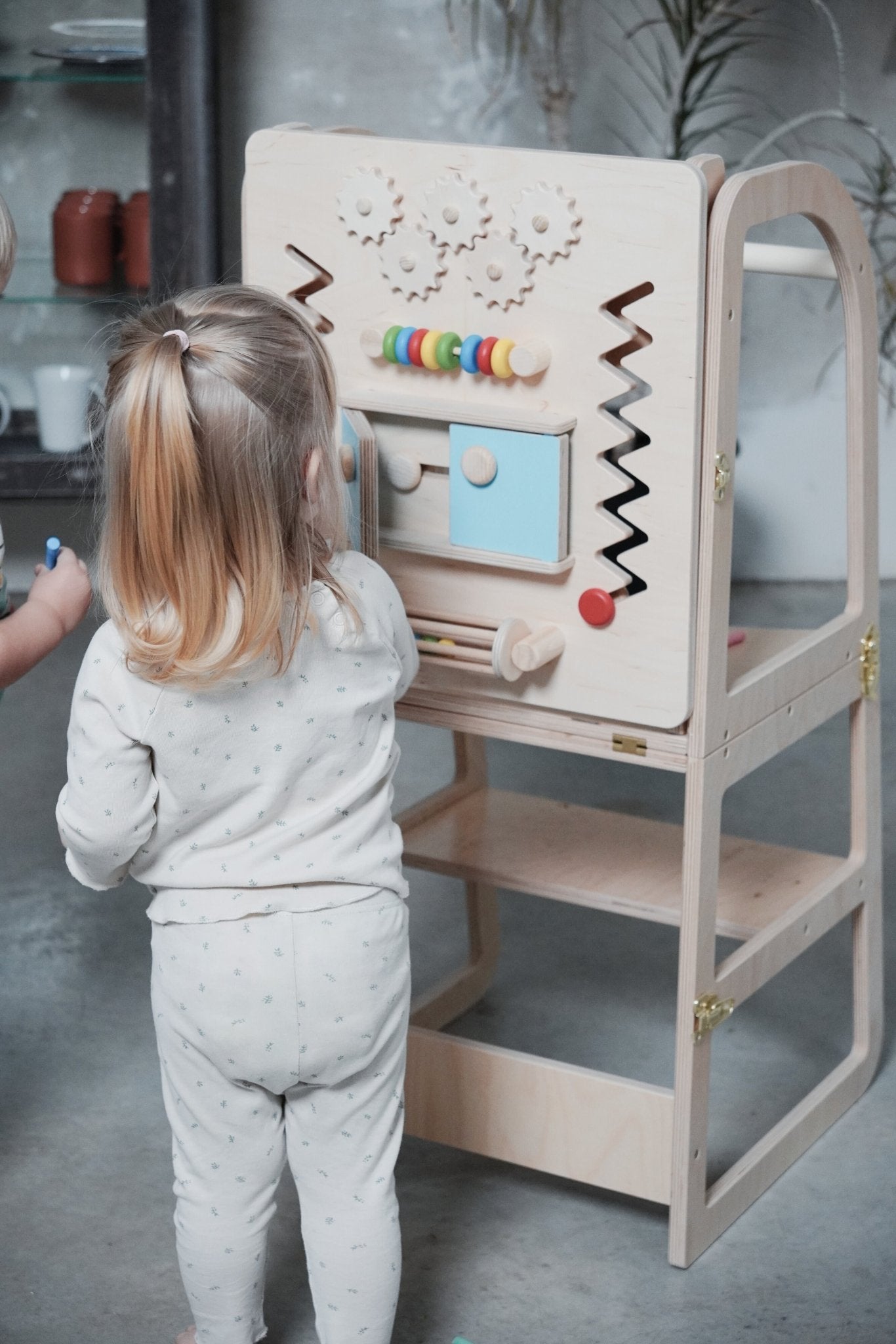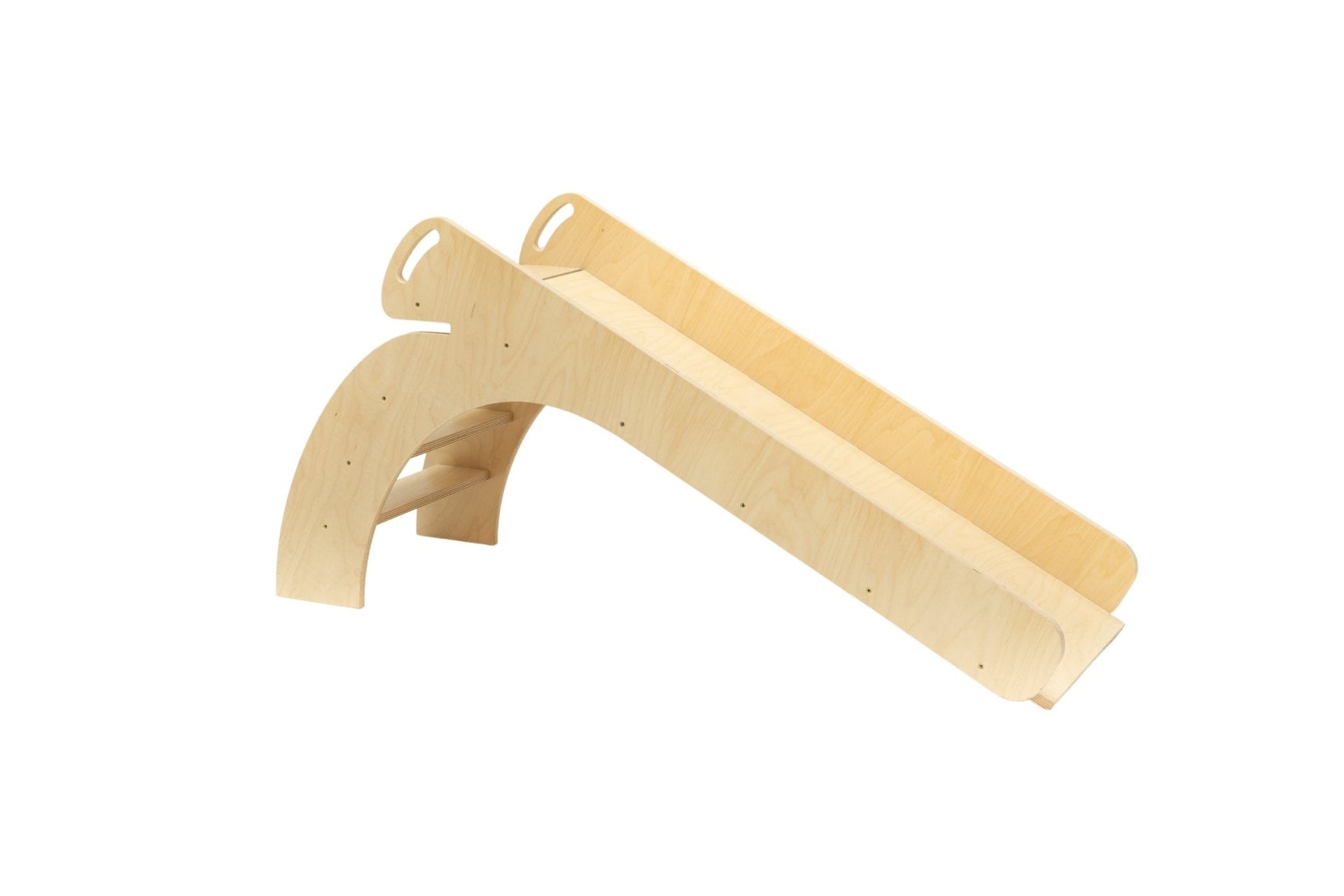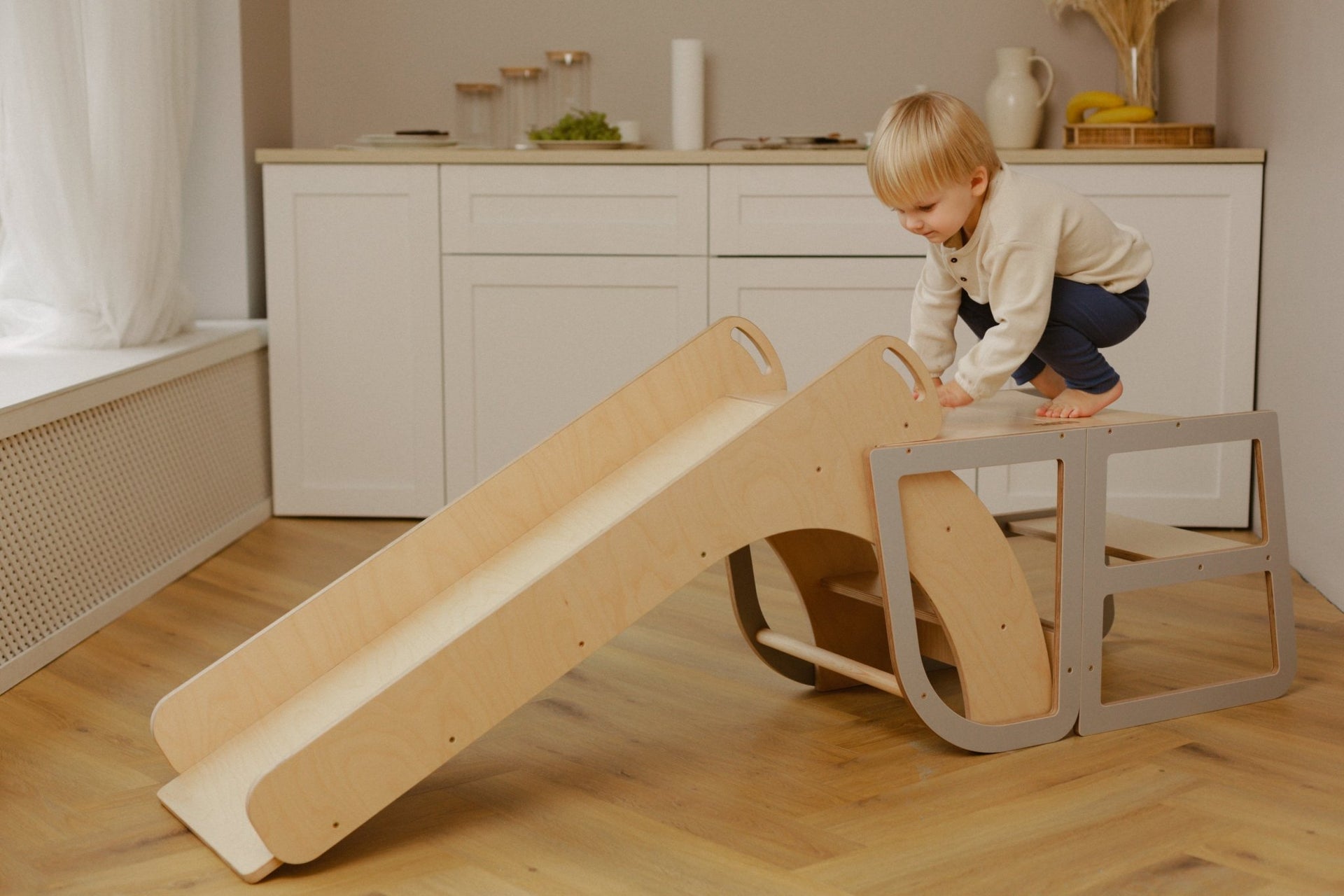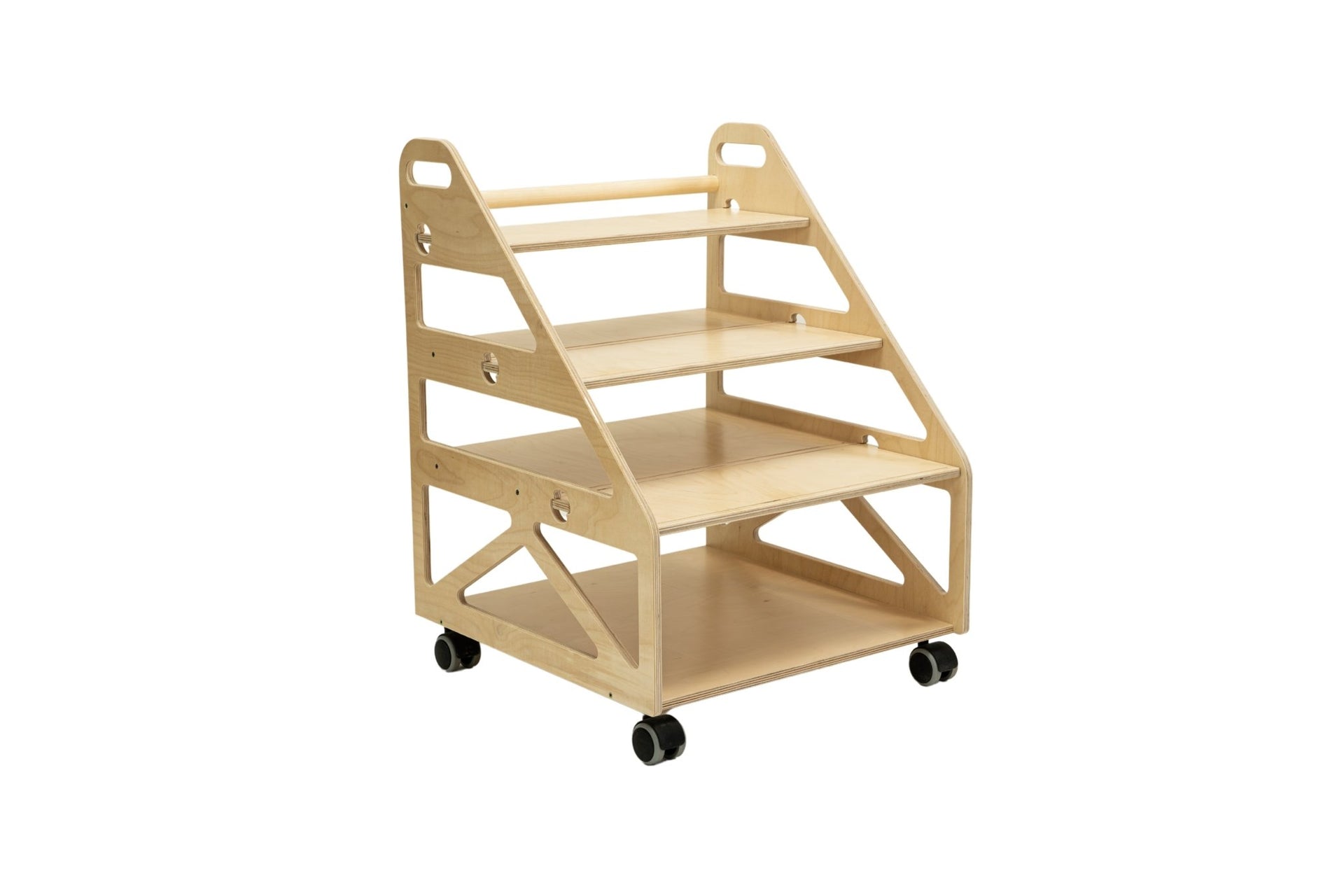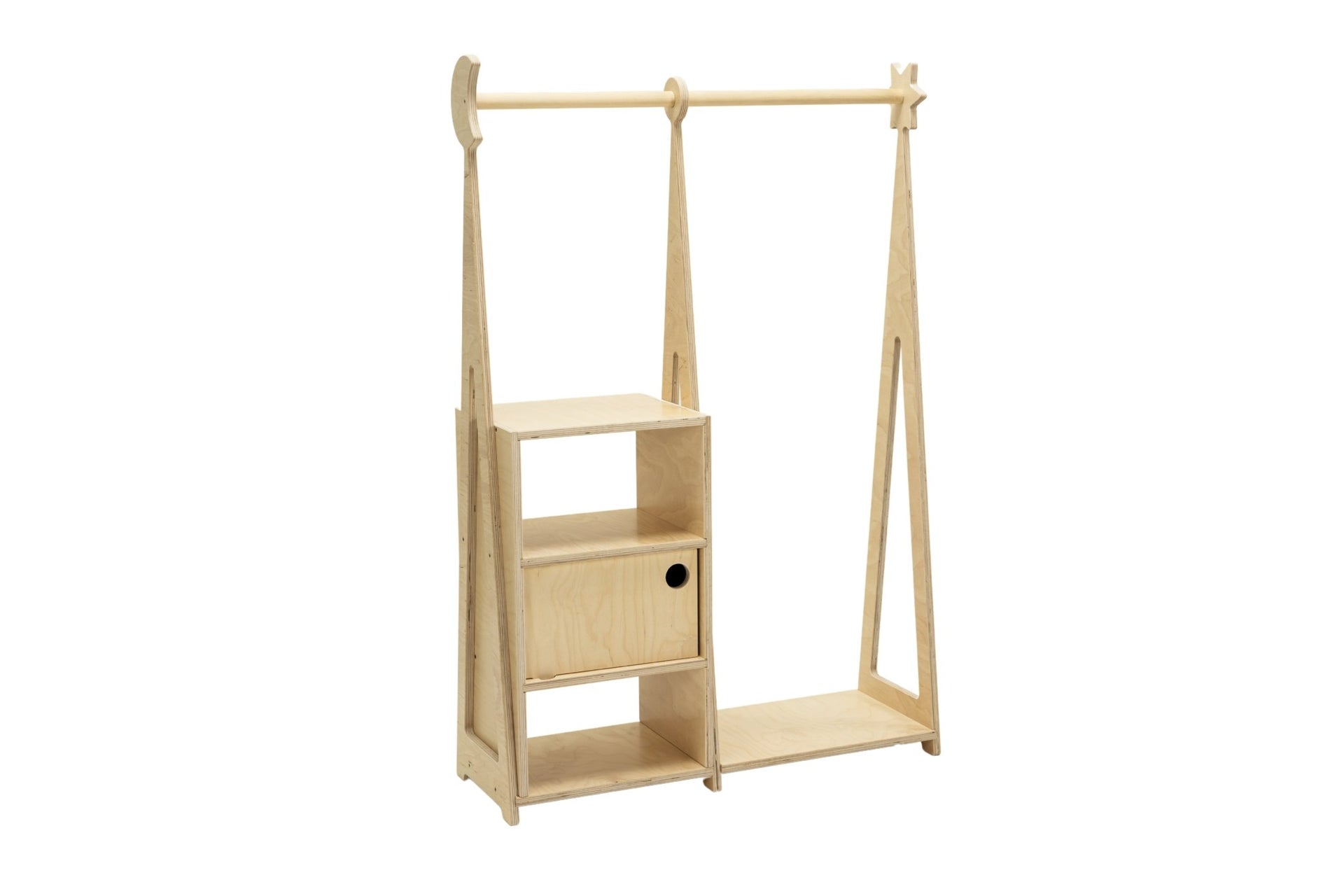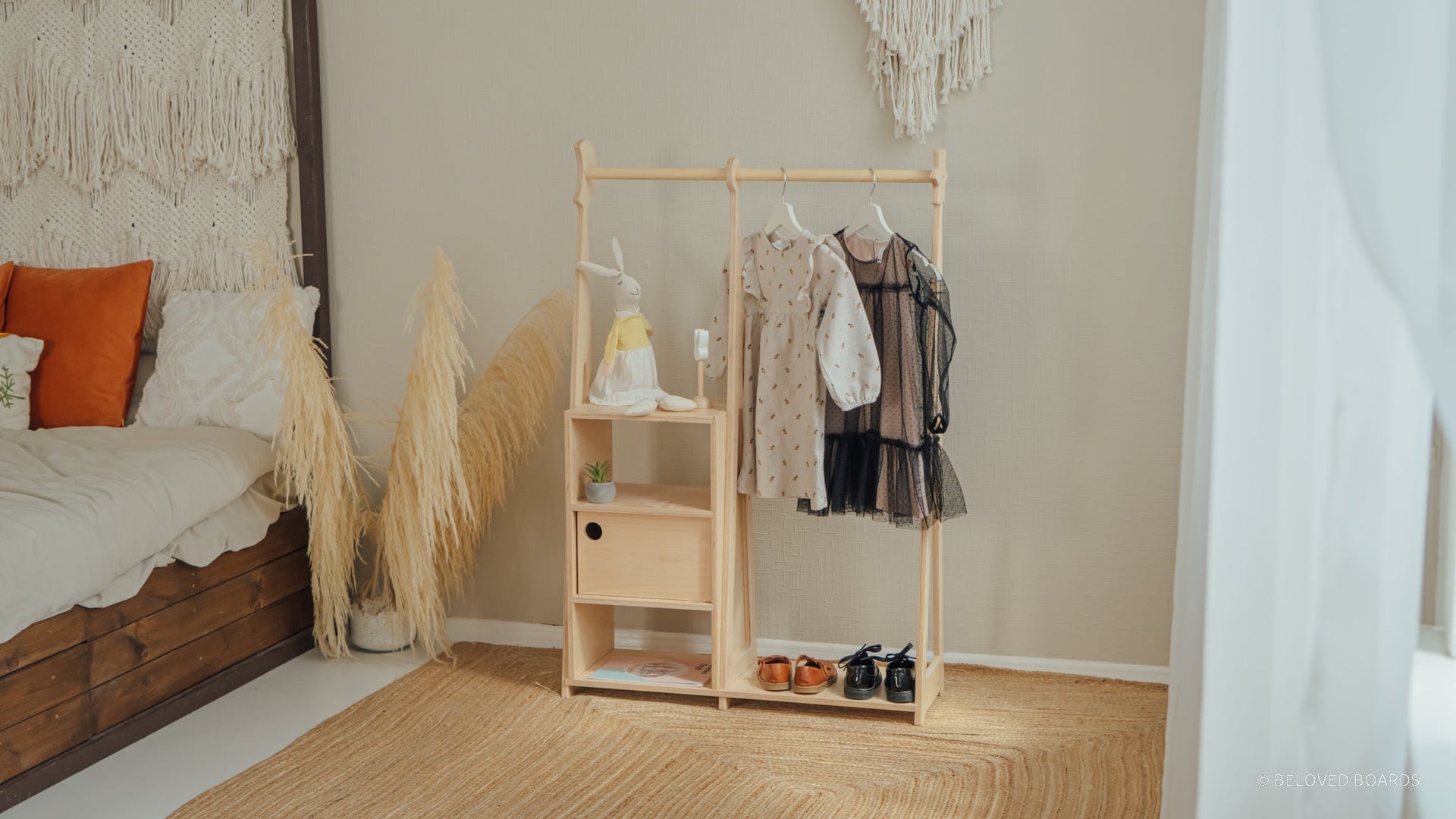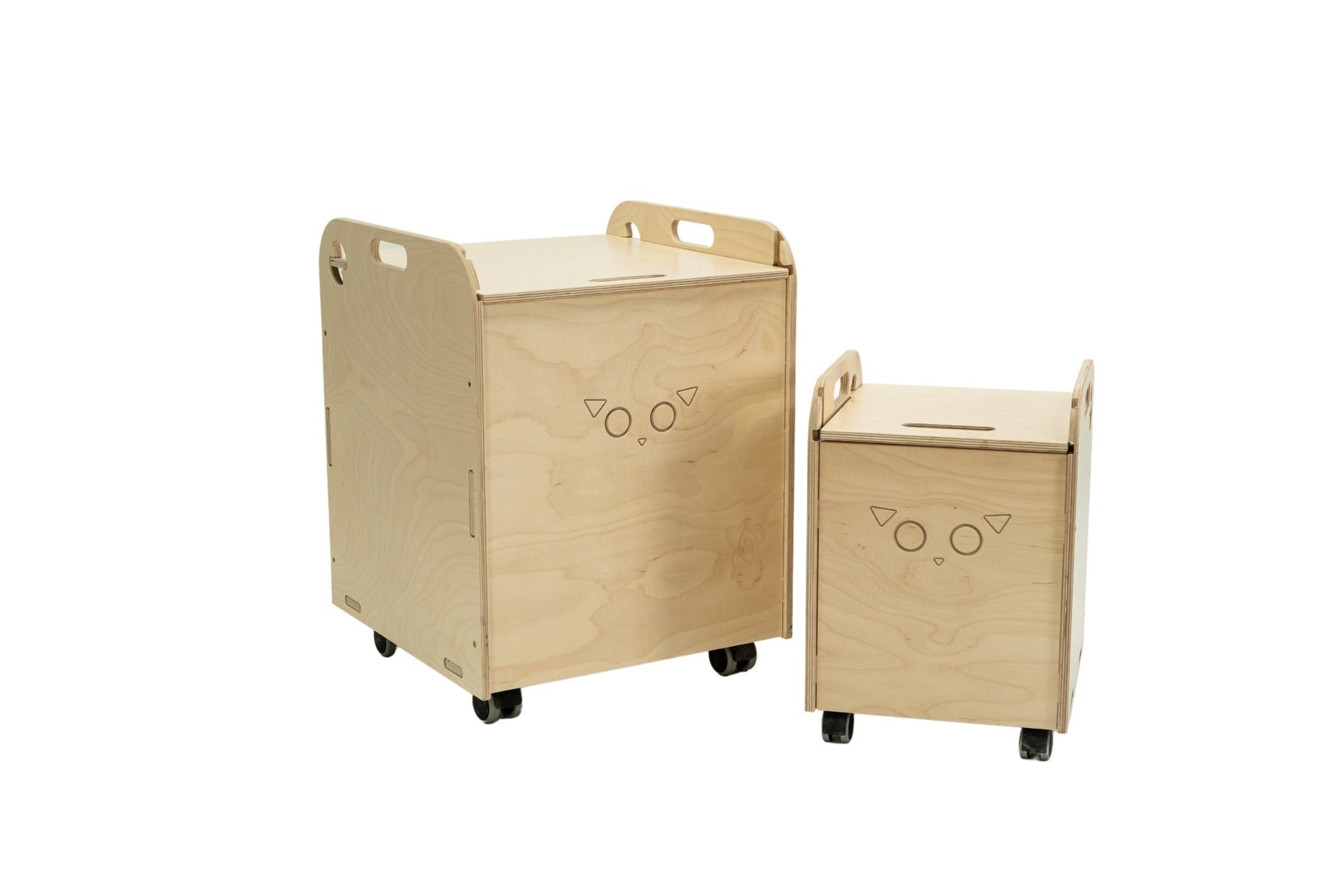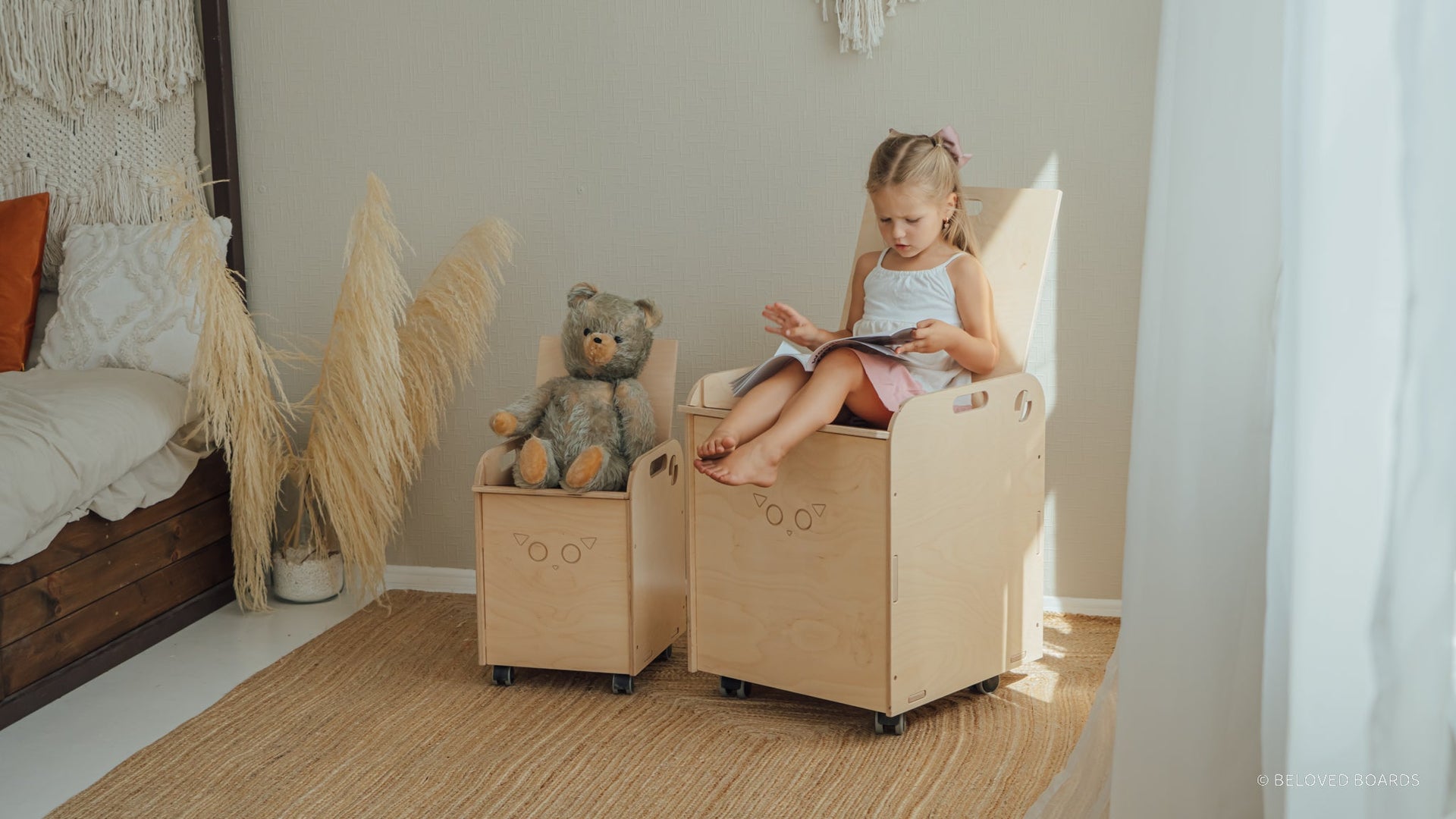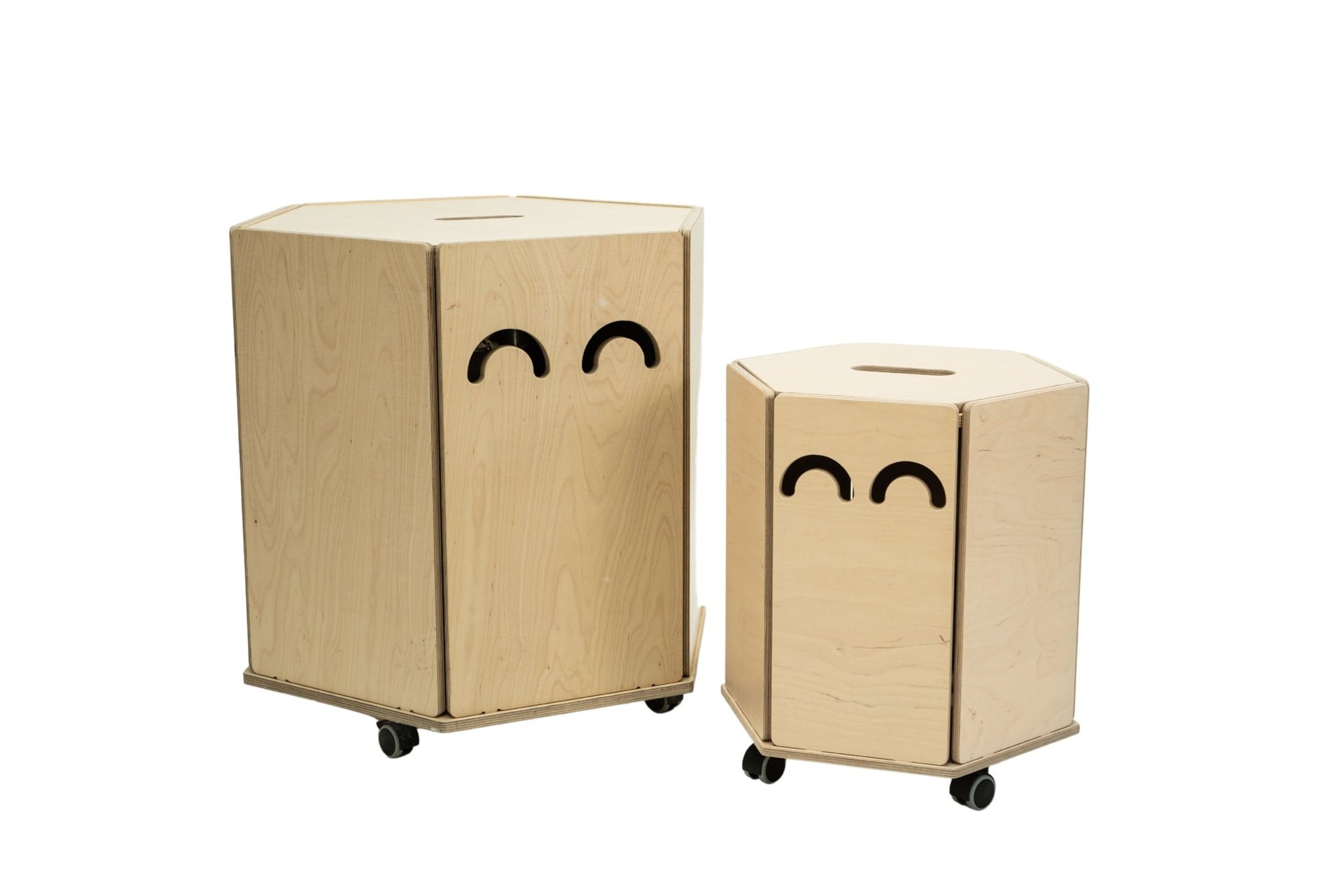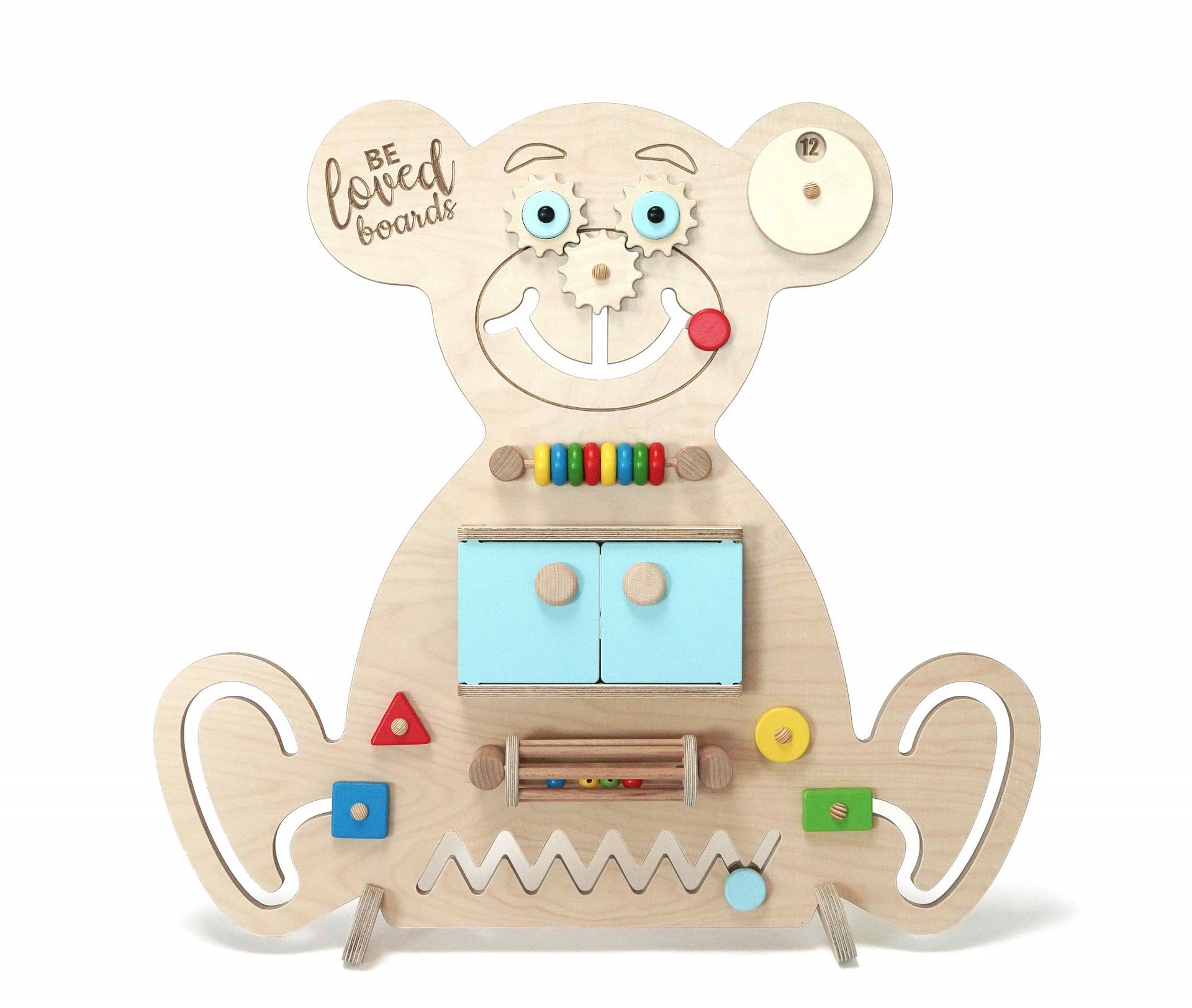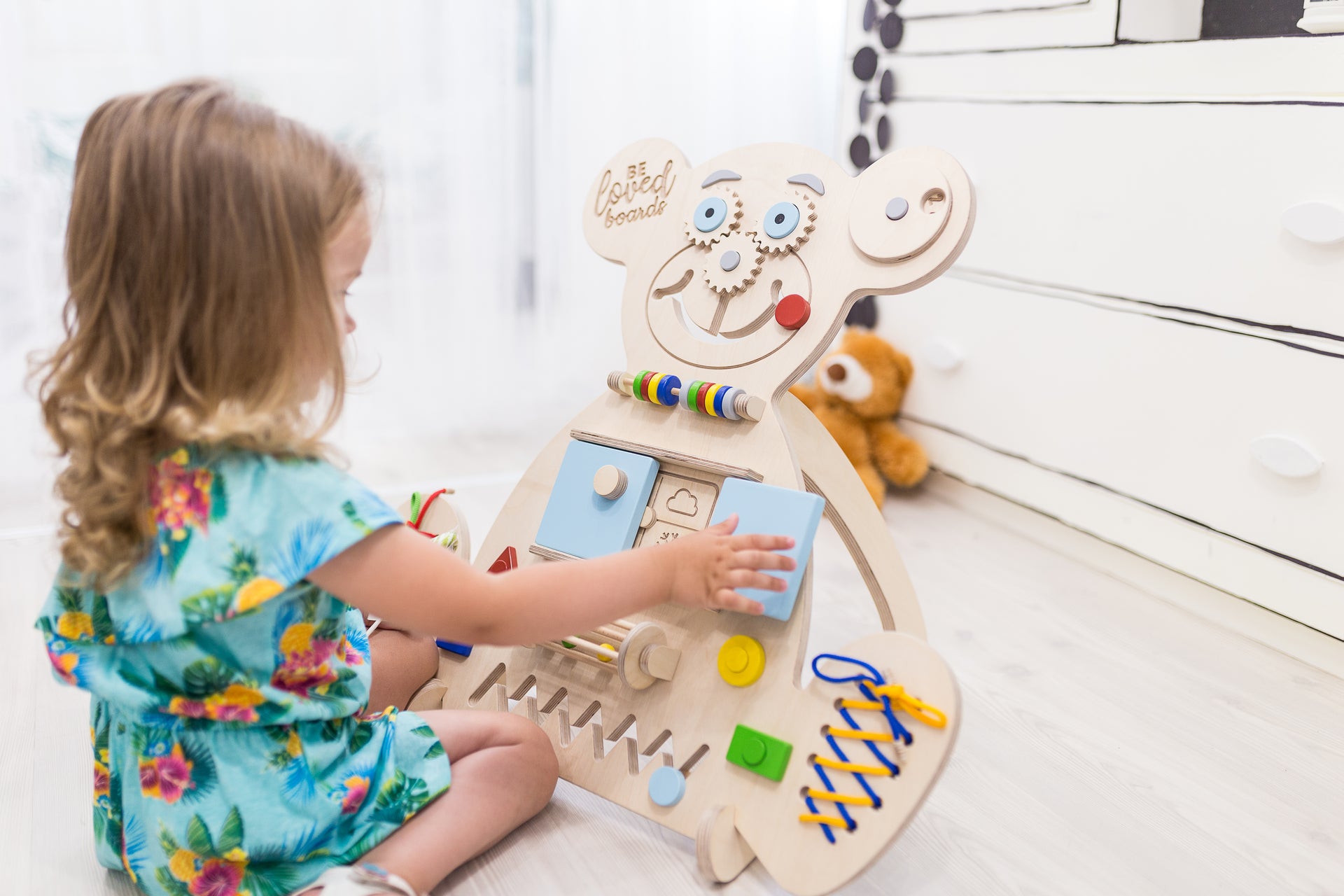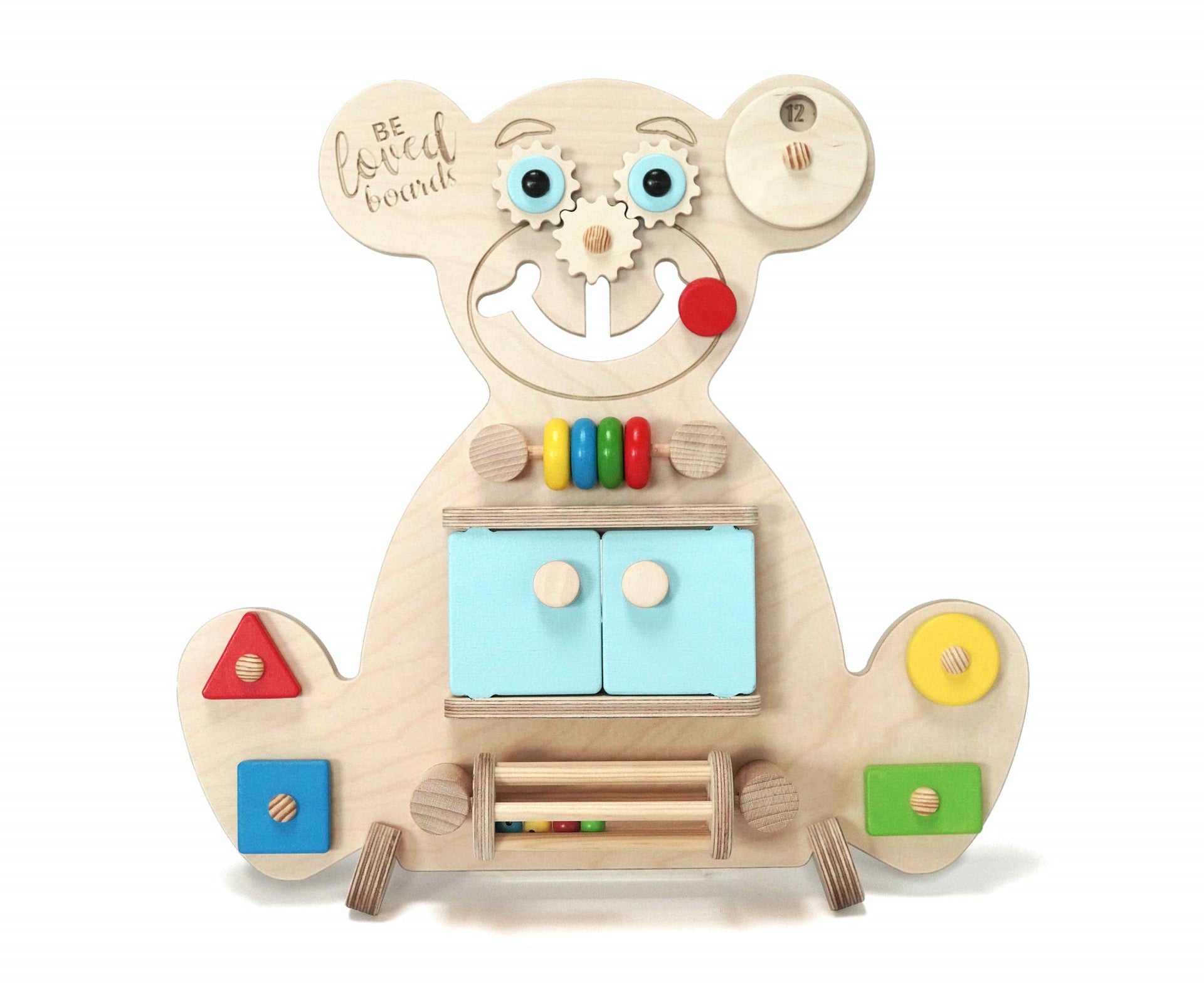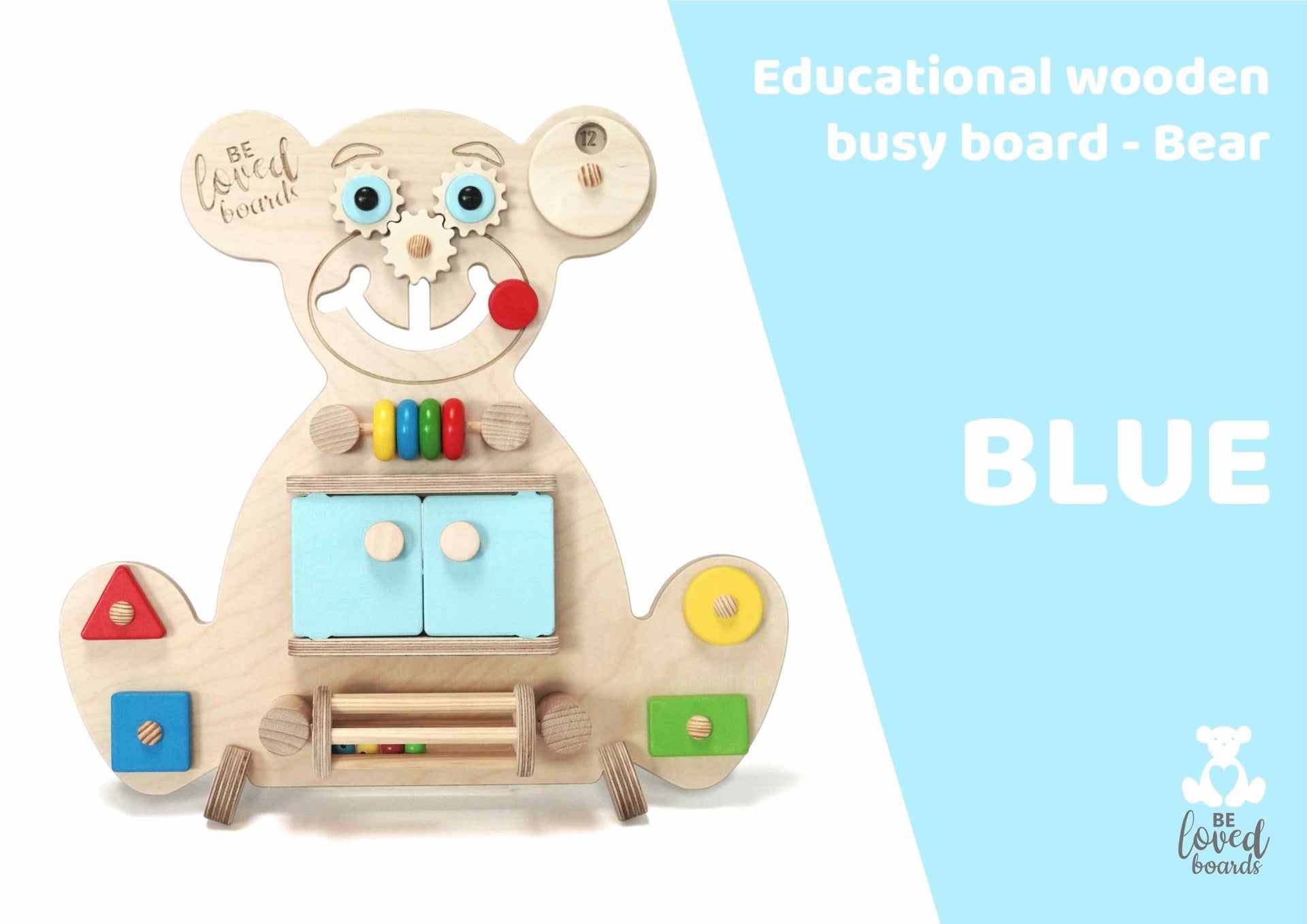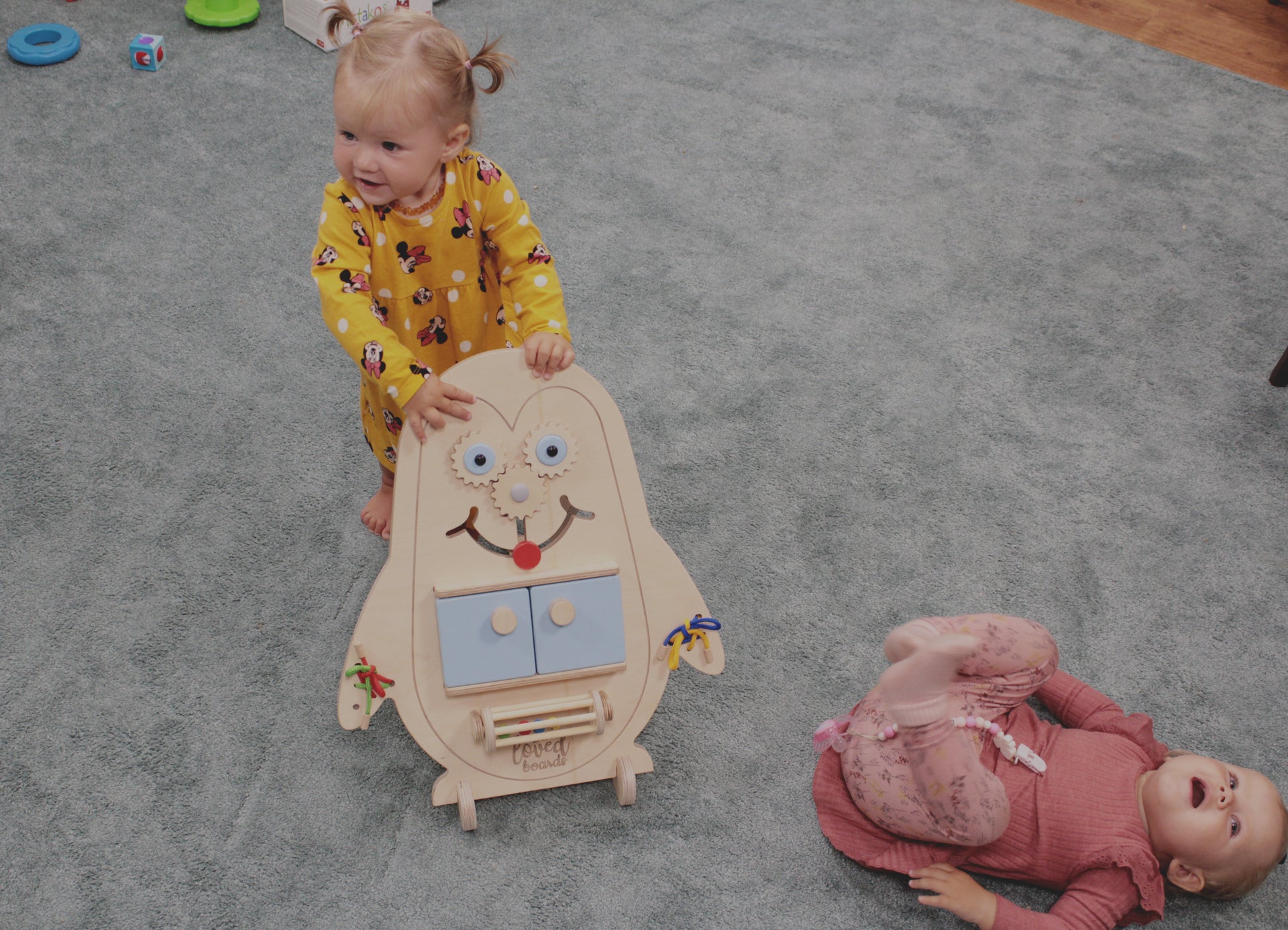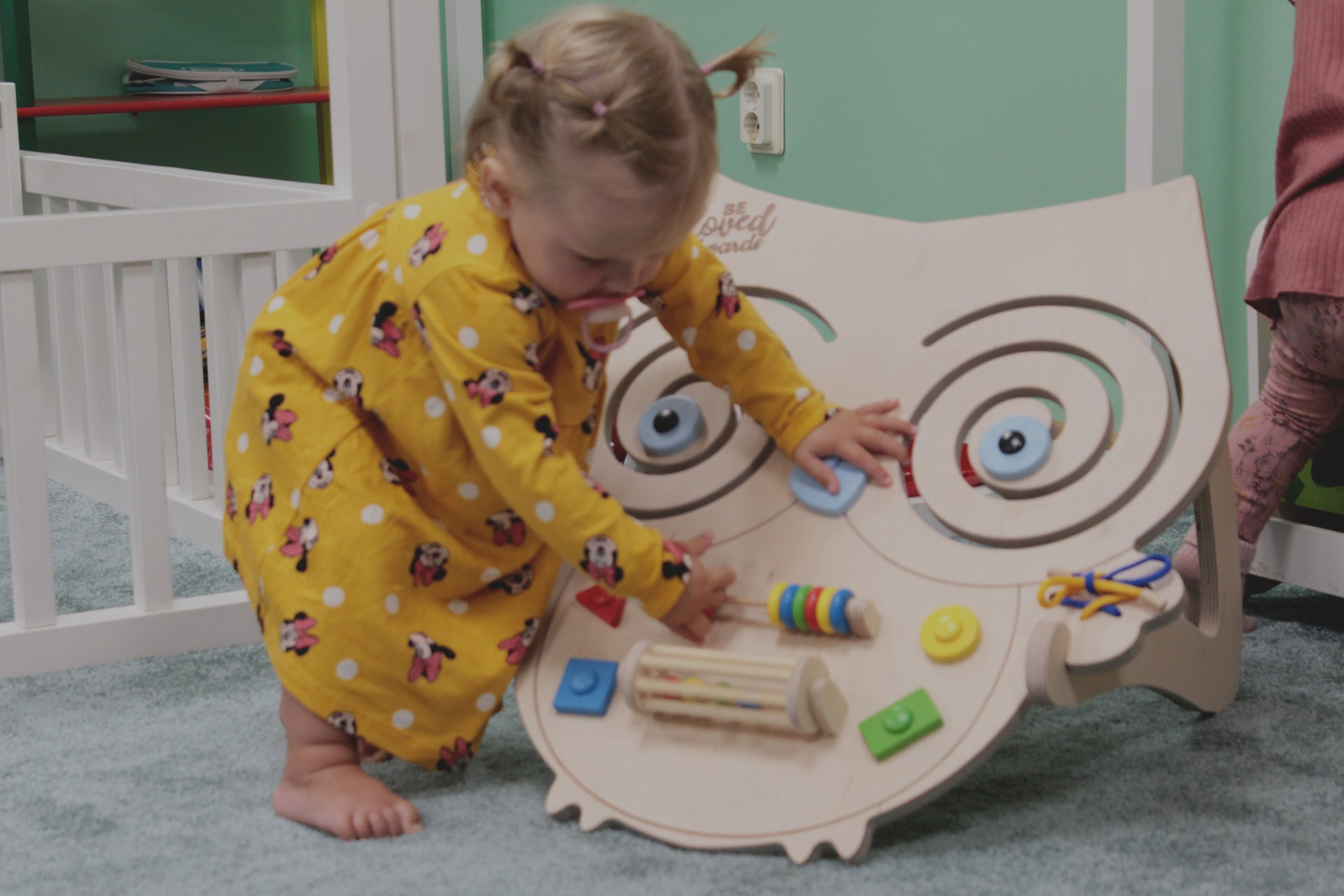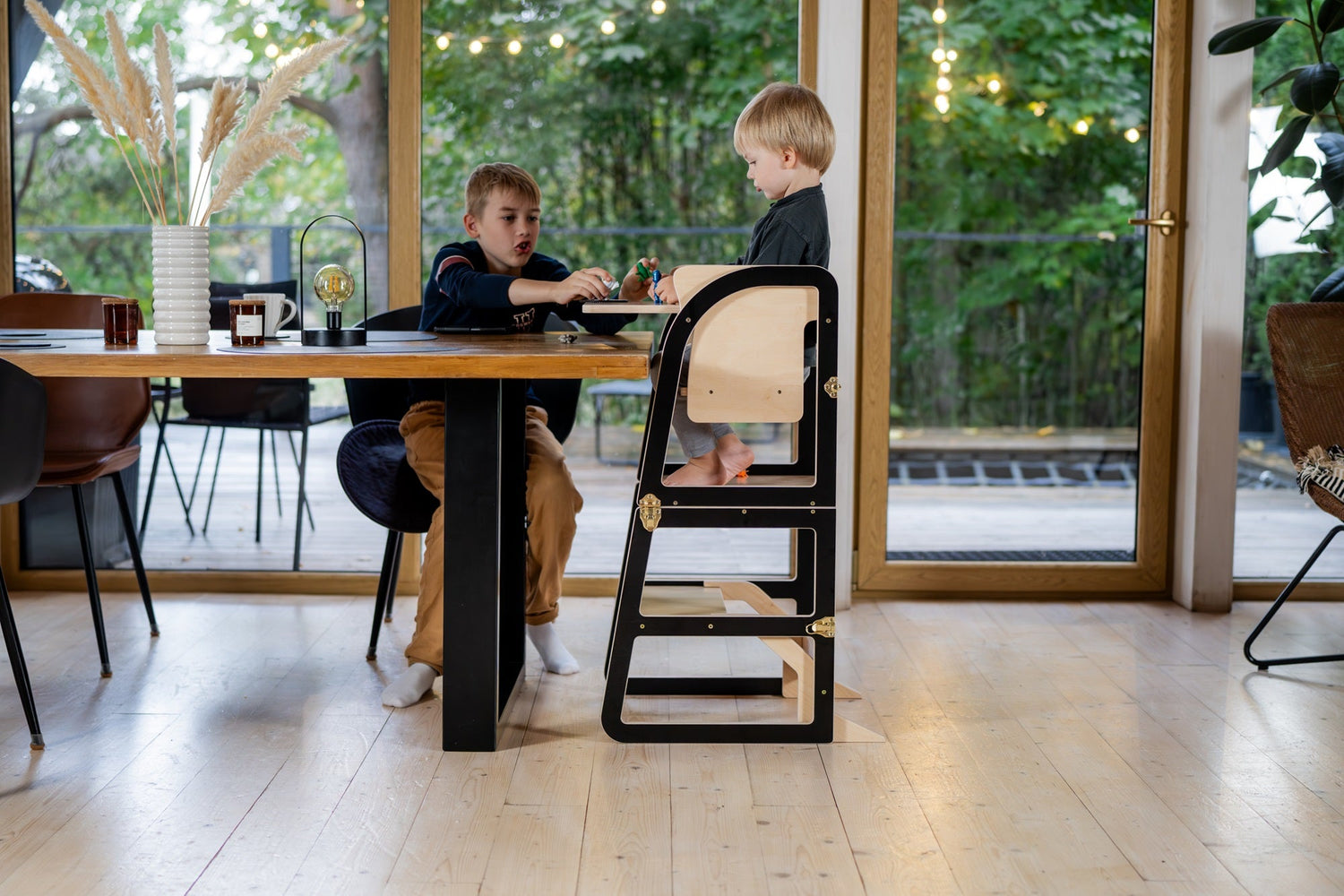
The Ultimate Guide to Building a Toddler Tower: Enhancing Independence and Creativity
Are you looking for ways to enhance your toddler's independence and creativity? Look no further! In this comprehensive guide, we will take you through the ultimate journey of building a toddler tower.
A toddler tower is a fantastic way to foster your child's imagination, boost their confidence, and develop their fine motor skills. Whether you're a parent, teacher, or caregiver, this guide will equip you with all the information you need to create a safe, fun, and stimulating play space for your little one.
From choosing the right materials and tools to step-by-step instructions on construction, we'll walk you through each stage of the process. Learn about the benefits of a toddler tower and how it can encourage your child's independent play and problem-solving abilities.
With our expert advice and tips, you'll be able to personalize the toddler tower to suit your child's interests and needs. Whether they want a reading nook, an art station, or a mini kitchen, we've got you covered.
Get ready to embark on this exciting project that will provide endless hours of entertainment and educational opportunities for your toddler!
A toddler tower offers numerous benefits for your child's development.
- Firstly, it promotes independence. As toddlers grow, they become more curious and eager to explore the world around them. A toddler tower allows them to reach new heights, giving them a sense of accomplishment and independence. With a toddler tower, they can access items on shelves, wash their hands in the sink, or even help with meal preparation in the kitchen. This independence fosters their confidence and nurtures their problem-solving skills.
- Secondly, a toddler tower encourages creativity. By providing a designated play space, you give your child the freedom to imagine and create. They can transform their tower into a spaceship, a castle, or a cozy reading nook. The possibilities are endless! This creative play helps stimulate their cognitive development and enhances their storytelling abilities.
- Additionally, a toddler tower promotes physical development. Climbing up and down the tower strengthens their muscles and improves their balance and coordination. It also allows them to practice their fine motor skills, such as turning pages in a book or using art supplies. This physical activity is crucial for their overall growth and development.
Safety should always be the top priority when building a toddler tower. Here are some important considerations to keep in mind:
- Sturdy construction: Ensure that the tower is stable and can support your child's weight. Use strong and durable materials to prevent any accidents or injuries.
- Rounded edges: Smooth out any sharp edges or corners to minimize the risk of cuts or bruises. Sanding the wood or using edge protectors can help create a safer environment for your child.
- Non-slip surface: Apply a non-slip material on the steps or platform to prevent your child from slipping and falling. This could be rubber mats, adhesive grip strips, or even a textured paint finish.
- Safety rails: Install safety rails around the platform to provide additional support and prevent your child from accidentally falling off. Make sure the rails are at an appropriate height and securely attached.
- Secure fasteners: Use strong and secure fasteners, such as screws or bolts, to connect the different components of the tower. Regularly check for any loose or damaged parts and make necessary repairs.
Remember to always supervise your child while they are using the toddler tower, especially if they are very young or new to climbing. Safety should never be compromised in the pursuit of independence and creativity.
Before you start building your toddler tower, gather the necessary materials and tools. Here's a list of what you'll need:
- Wood: Choose a sturdy and durable wood, such as birch or oak, for the frame and steps of the tower. Measure the required dimensions based on your child's height and comfort.
- Screws or bolts: Select appropriate screws or bolts to securely fasten the different components of the tower. Make sure they are of the right size and strength to ensure stability.
- Drill or screwdriver: Use a drill or screwdriver to insert the screws or bolts into the wood. This will make the assembly process easier and more efficient.
- Sandpaper: Smooth out any rough edges or surfaces using sandpaper. This will prevent splinters and create a safer play environment for your child.
- Non-toxic paint or stain: If you wish to add a splash of color to your toddler tower, choose a non-toxic paint or stain. Ensure that it is safe for children and won't cause any harm if ingested.
- Safety goggles and gloves: Protect yourself during the construction process by wearing safety goggles and gloves. This will prevent any accidental injuries and ensure a safe working environment.
Be sure to gather all the required materials and tools before you begin the construction process. This will make the building process smoother and more efficient.
Now that you have everything you need, let's dive into the step-by-step instructions for building your toddler tower:
- Measure and cut the wood: Use a measuring tape to determine the required dimensions for the frame and steps of the tower. Mark the measurements on the wood and carefully cut them using a saw.
- Smooth out the edges: Use sandpaper to smooth out any rough edges or surfaces on the wood. This will prevent any potential splinters and create a safer play environment for your child.
- Assemble the frame: Begin by assembling the frame of the tower. Connect the vertical and horizontal pieces of wood using screws or bolts. Ensure that the frame is stable and secure.
- Attach the steps: Once the frame is assembled, attach the steps at appropriate intervals. Use screws or bolts to securely fasten them to the frame. Ensure that the steps are evenly spaced and at a comfortable height for your child.
- Sand and paint: After the construction is complete, sand any remaining rough surfaces and apply a non-toxic paint or stain if desired. Allow the paint to dry completely before allowing your child to use the tower.
- Test for stability: Before your child uses the tower, test its stability by gently shaking it and applying slight pressure. Make any necessary adjustments or repairs to ensure the tower is safe and secure.
Following these step-by-step instructions will help you build a sturdy and functional toddler tower for your child. Remember to take your time and double-check all connections to ensure the tower is secure.
Once the construction is complete, it's time to personalize your toddler tower according to your child's interests and needs. Here are some ideas for decorating and customizing your toddler tower:
- Theme-based decorations: Choose a theme that your child loves, such as space, animals, or their favorite storybook. Use stickers, decals, or stencils to add themed decorations to the tower.
- Soft cushions or pillows: Create a cozy reading nook by adding soft cushions or pillows to the platform of the tower. Your child can sit comfortably while exploring books or engaging in imaginative play.
- Art supplies and a small easel: If your child enjoys drawing or painting, attach a small easel to the tower and provide them with art supplies. This will encourage their creativity and allow them to express themselves through art.
- Mini kitchen or play food: Transform the tower into a mini kitchen by adding a small countertop and play food. Your child can pretend to cook and serve meals, fostering their imagination and pretend play skills.
- Storage baskets or shelves: Incorporate storage solutions into the tower by attaching baskets or shelves. This will help keep toys, books, and art supplies organized and easily accessible for your child.
Remember to involve your child in the decorating process. Ask for their input and let them make decisions about how they want to personalize their tower. This will make the play space more meaningful to them and encourage their independence and creativity.
Now that your toddler tower is complete and personalized, it's time to explore the endless possibilities for creative play. Here are some activities and games to enhance creativity with a toddler tower:
- Puppet theater: Hang a small curtain or fabric from the safety rails to create a puppet theater. Your child can put on puppet shows and engage in imaginative storytelling.
- Sensory play station: Fill a shallow tray with sand, water, or rice and place it on the platform of the tower. Provide scoops, cups, and other sensory tools for your child to explore and experiment with different textures and materials.
- Building blocks or LEGO station: Set up a designated area on the platform for building blocks or LEGO. Your child can construct towers, houses, or any other creations they can imagine.
- Reading nook: Create a cozy reading nook by adding a small bookshelf or book rack to the tower. Fill it with age-appropriate books and encourage your child to explore and read independently.
- Art station: Attach a clip or magnetic board to the tower where your child can display their artwork. Provide them with a variety of art supplies, such as crayons, markers, and colored pencils, to encourage their creativity.
These activities and games will not only enhance your child's creativity but also provide opportunities for independent play and problem-solving. Encourage your child to explore and experiment with different activities on the toddler tower, allowing them to express themselves and develop their imagination.
To ensure the longevity and safety of your toddler tower, regular maintenance and care are essential. Here are some maintenance tips to keep in mind:
- Regular inspections: Periodically inspect the tower for any loose screws or bolts, damaged parts, or signs of wear and tear. Make any necessary repairs immediately to maintain the stability and safety of the tower.
- Cleaning: Clean the tower regularly to remove any dirt, dust, or stains. Use a mild soap and water solution and a soft cloth or sponge. Avoid harsh chemicals that may damage the paint or wood.
- Repainting or refinishing: Over time, the paint or stain on the tower may fade or chip. Consider repainting or refinishing the tower to keep it looking fresh and vibrant. Ensure that any new paint or stain is non-toxic and safe for children.
- Storage during inclement weather: If your toddler tower is placed outdoors, it's important to protect it from harsh weather conditions. During heavy rain or snowfall, move the tower indoors or cover it with a waterproof tarp to prevent damage.
By following these maintenance tips, you can ensure that your toddler tower remains safe and enjoyable for years to come.
One of the key benefits of building a toddler tower is the opportunity to enhance your child's independence. Here are some ways you can encourage independence through the use of a toddler tower:
- Setting up a routine: Incorporate the toddler tower into your child's daily routine. For example, encourage them to brush their teeth at the tower's sink or wash their hands independently before meals. This routine will help them develop good hygiene habits and a sense of responsibility.
- Encouraging decision-making: Allow your child to make their own choices when using the toddler tower. Let them decide which activities they want to engage in or what materials they want to use. This empowers them to think for themselves and build confidence in their decision-making abilities.
- Offering age-appropriate challenges: Provide your child with age-appropriate challenges while using the toddler tower. For example, encourage them to climb up and down the steps independently or reach for objects on higher shelves. These challenges promote problem-solving skills and physical development.
- Allowing free play: Give your child ample time for unstructured, independent play on the toddler tower. This allows them to explore their own interests, engage in imaginative play, and build their creativity. Avoid constantly directing or supervising their play, as this can hinder their independence and self-expression.
By incorporating these strategies into your child's playtime on the toddler tower, you can gradually enhance their independence and foster their overall development.
Building a toddler tower is a rewarding and enriching experience for both you and your child. It provides them with a safe and stimulating play space that enhances their independence and creativity. By following the step-by-step instructions, considering safety precautions, and personalizing the tower to suit your child's interests, you can create a magical world of exploration and imagination.
Remember to regularly maintain and care for the toddler tower to ensure its safety and longevity. Encourage your child to engage in independent play and provide them with age-appropriate challenges that promote problem-solving and creativity. Through the use of the toddler tower, you can empower your child to explore, create, and grow.
Embark on this exciting project and witness the endless hours of entertainment and educational opportunities that a toddler tower can provide for your little one. Watch as their confidence soars, their imagination flourishes, and their independence shines through. Building a toddler tower is more than just constructing a piece of furniture; it's an investment in your child's development and a gateway to a world of endless possibilities.

